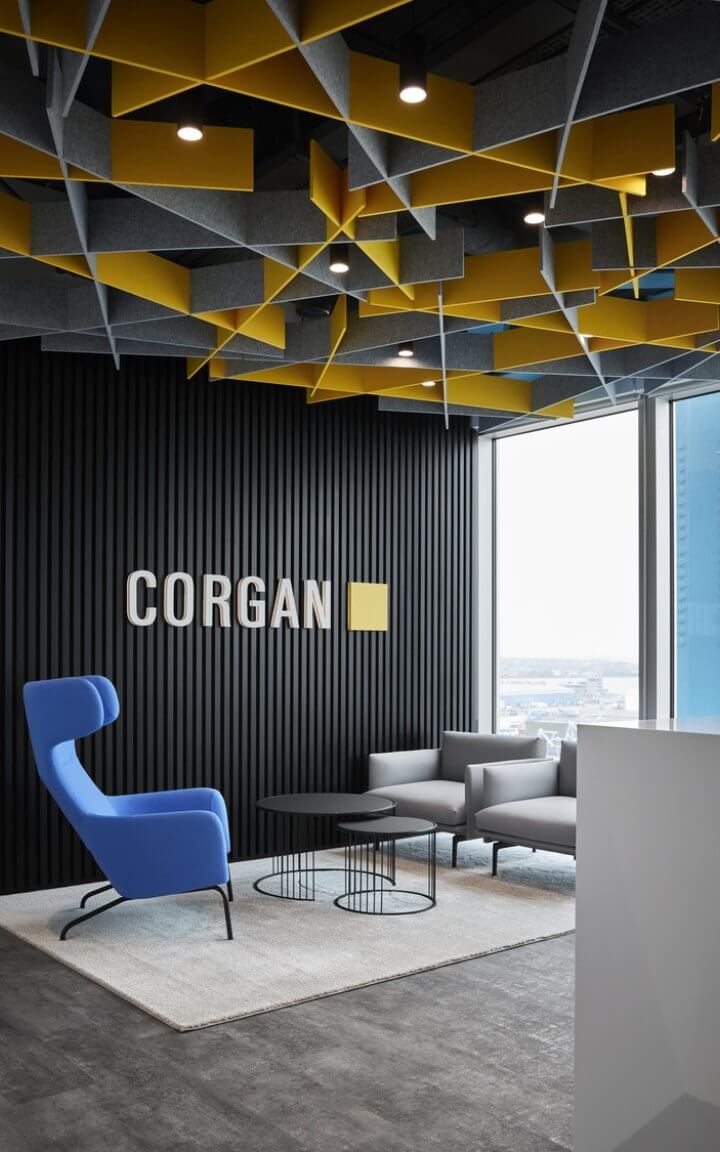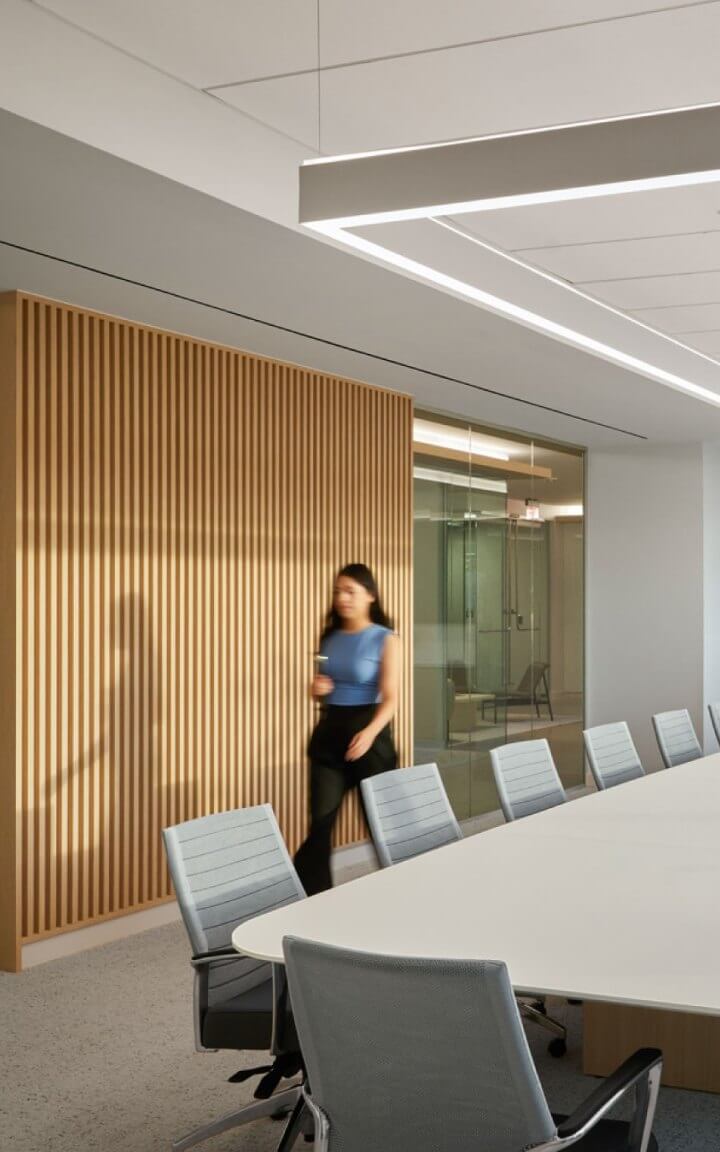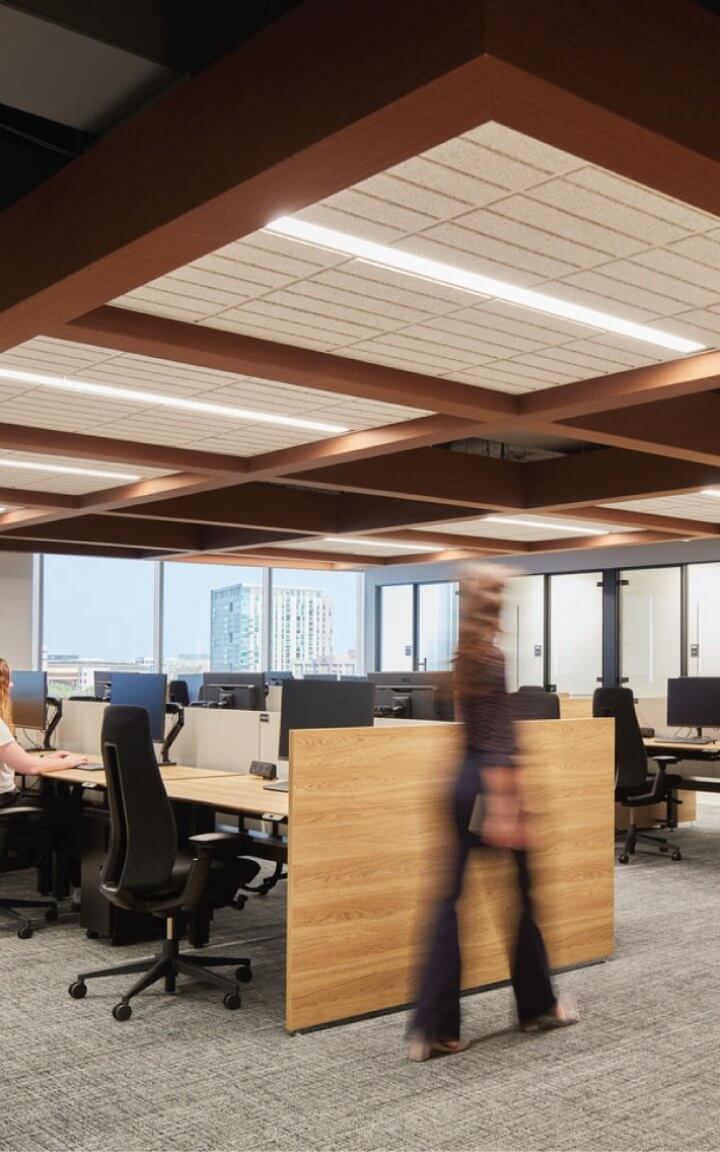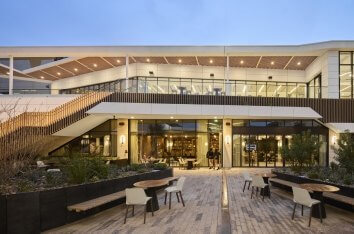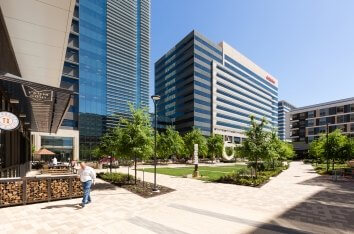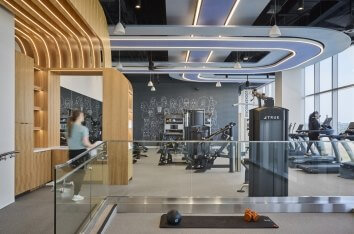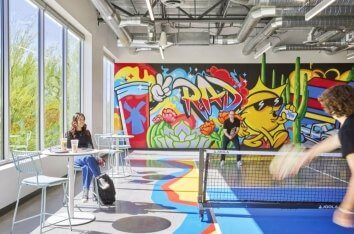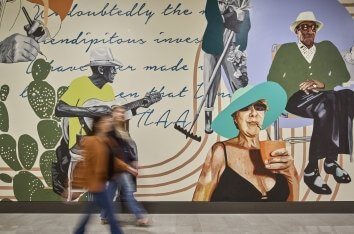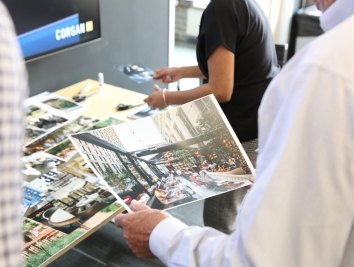Unlocking the Power of Neighborhood Networks
Workplace is a District, not a Desk
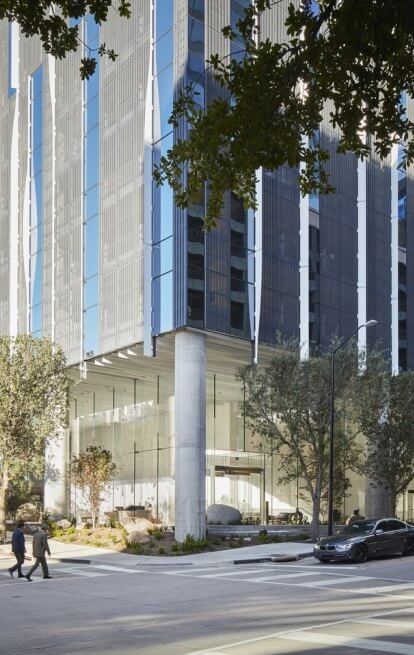
Key Insights
Neighborhoods drive return-to-office behavior. Walkable, amenity-rich areas are now workplace differentiators.
Employees spend over $3,000 a year on after-work hangouts. Parks, cafés, and sidewalks aren’t extras—they’re where trust, culture, and belonging take root.
Vibrant neighborhoods fuel well-being, productivity, and retention. The smartest workplaces extend beyond four walls.
Neighborhood assets aren’t just perks
They’re strategic levers for retention, performance, and community impact.
Today’s employees expect more than an office — they expect an ecosystem where both the workplace and its surrounding neighborhood shape their daily experience. They’re seeking spaces that support connection, deep focus, and access to the surrounding community, all with a sense of choice and autonomy. To meet these expectations, organizations must recognize that the workplace experience doesn’t end at the office door.
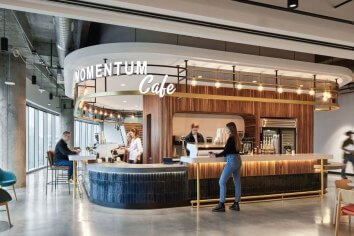
PMG Headquarters
As employees make their way back into offices, the question has evolved. It’s no longer just what’s inside the building—but what’s around it. Desks and golf simulators alone aren’t cutting it. Today’s employees are looking for a complete experience that blends work, life, and everything in between.
In a recent Corgan survey employees commuting four days a week consistently ranked nearby assets—like parking, restaurants, coffee shops, shopping, and green space—as extremely or very important to their satisfaction. The implication is clear: if companies want people to come in, they need to think beyond office walls.
Let’s zoom out. According to the U.S. Census Bureau, 68% of U.S. workers—roughly 136 million people—commute to a physical workplace each day. For the majority, location is no longer just a logistical detail; it’s a lifestyle decision. Internal research from Hugo’s Hybrid Report and Residency Reshaped shows that today’s office must do more than function—it must integrate seamlessly with vibrant, walkable, engaging environments. The future of work isn’t just flexible—it’s hyperlocal.
Reshaping the Value of Neighborhoods
As of 2024, hybrid work has emerged as the predominant organizational structure, with 74% of companies reporting the adoption of hybrid programs. This widespread shift reflects a systemic evolution in progressional work culture—one that prioritizes flexibility and reduces the need for daily commutes. In fact, hybrid employees are saving an average of 67 commute hours annually and 75% of employees willing to switch jobs for a shorter commute—location has never been more influential.
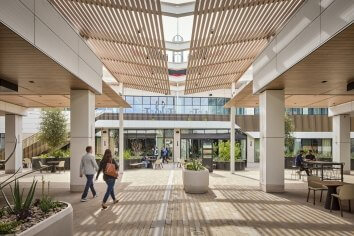
The Esplanade
This shift is doing more than changing schedules—it’s reshaping the value of neighborhoods. As the office becomes less of a daily destination, the neighborhoods that surround it take on a new meaning. Employees increasingly evaluate the entire experience of going to work, factoring in local amenities, walkability, and opportunities for connection.
Organizations are adjusting in real time. Nearly half (46%) are tracking the impact of hybrid or return-to-office policies, though only 17% are enforcing them. Many are using attendance as a stand-in for engagement, but the connection between presence and performance remains unclear. Among those that measure more intentionally, 65% rely on employee engagement scores to assess success—raising a deeper question: how much of that engagement is influenced not by the desk, but by the district?
Beyond the Office Walls: the Neighborhood is Now Part of the Workplace
Great offices don’t exist in isolation. The surrounding neighborhood plays a critical role in shaping the full employee experience — supporting not only daily convenience but also long-term well-being, productivity, and connection.
In a recent Corgan survey employees identified the top neighborhood amenities influencing their desire to return to the office: parking access, restaurants, coffee shops, shopping options, and green space.
These “third places” — social hubs that exist outside of home and work — serve as essential anchors in daily life. They foster convenience, social connection, and moments of focus and well-being throughout the day. The number and variety of amenities, including shops, cafes and restaurants, can therefore be seen as essential components in creating the conditions for steady foot traffic and engagement continuously throughout the day.
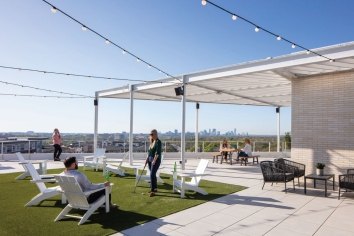
Auctane Office
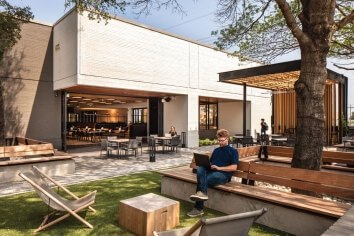
Peloton Office
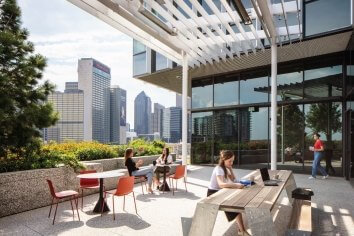
Uber Hub
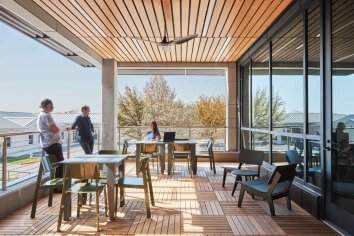
PCSI Headquarters
And those moments matter. Social connection is one of the strongest predictors of employee well-being and performance. According to research published in the Harvard Business Review, employees with strong social ties at work report higher engagement and resilience, while loneliness correlates with lower productivity and higher burnout.
Meanwhile, Gallup data shows that having a best friend at work is linked to a 36% higher likelihood of employee satisfaction and performance. While these findings are rooted in the office environment, neighborhood assets—like walkable cafes or shared outdoors spaces—extend those opportunities for connection beyond the office walls.
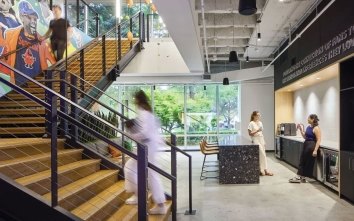
Learfield Headquarters
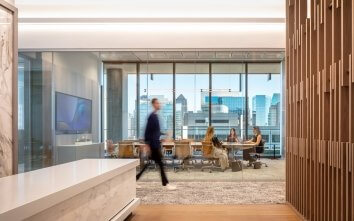
Montgomery Street Partners
These preferences aren’t just about convenience— they are linked to deeper urban dynamics. A vibrant neighborhood isn’t just lively-it’s socially intelligent. Social interactions in neighborhoods, especially in active, amenity-rich environments, influence everything from personal well-being to productivity and even wages. Role model effects, for instance, highlight how exposure to others’ behaviors—particularly in socially overlapping environments—can shape individual outcomes. This kind of social feedback loop is central to the productivity-enhancing power of well-connected urban areas.
Urban vibrancy, as defined in planning and public health literature, is a multi-dimensional indicator of liveliness and opportunity. It encompasses everything from local economic growth and cultural activity to public safety and social cohesion. Factors like the density and diversity of amenities, walkability, and proximity to the city center are consistently linked to greater urban vitality. These aren’t just features—they’re forces that attract people, promote movement, and stimulate community connections throughout the day.
Emerging neighborhood models—like the 15-minute city or innovation districts—point toward a future where everything employees need is just a short walk or bike ride away. These urban formats support equity, sustainability, and resilience, making them smart bets for long-term investment. Designing for this reality means evaluating not only office interiors, but also the sidewalk experience, street-level retail, and public space activation. It’s about creating neighborhoods where people want to linger—not just arrive and leave.
And when people linger, connection follows. Social connection isn’t just good for morale—it’s part of the bottom line. On average, employees spend about $3,035 a year on after-work hangouts like happy hours, dinners, and casual meetups. These moments do more than fill calendars—they build trust, team culture, and a sense of belonging. In fact, 80% of employees with close work friends say they feel more connected to their organizations, and 86% report higher satisfaction with their work. Even quick chats in a park or on the street add to that sense of community. It’s the spaces between meetings—welcoming sidewalks, local cafés, green spaces—that help those connections stick.
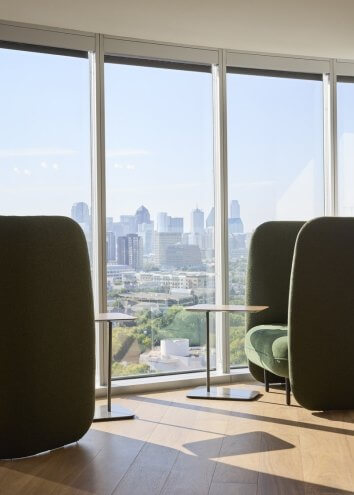
Brunswick Group
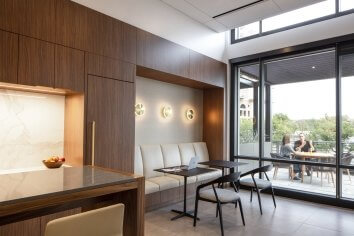
Eastdil Secured
Putting It All Together: A Full Spectrum Experience
Employees don’t just work in buildings—they work in neighborhoods. A vibrant, amenity-rich area reinforces the very values that hybrid work is built on: autonomy, flexibility, and connection. Today’s workplace must deliver on all fronts—within the office walls and beyond them.
Inside the office, expectations have evolved. Functionality, comfort, and flexibility are no longer perks—they’re baseline requirements. Employees want spaces that support focused work, effortless collaboration, and moments of respite. That means strong IT infrastructure, ergonomic seating, natural light, and wellness amenities that reflect the comfort of home.
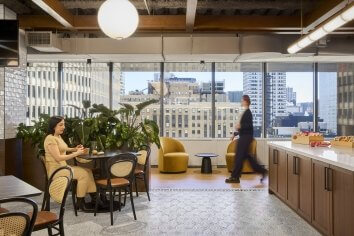
Alvarium Tiedemann
But meeting these expectations is now table stakes. What distinguishes a truly compelling workplace is how seamlessly it connects to the environment outside. Proximity to home matters, but so does proximity to life. Employees aren’t choosing between office or neighborhood amenities—they expect both. They want to step out for a walk, grab coffee with a colleague, or unwind in a park—all without disrupting their flow.
As companies reassess their office strategies and look to bring energy back to the workplace, the focus must expand. It’s no longer enough to think in terms of square footage. It’s time to think in terms of square blocks. The most competitive workplaces will be those that balance in-office assets with neighborhood experiences—creating a full-spectrum environment that supports not only productivity, but also connection, well-being, and belonging.
AUTHOR
Julia Calebrese, Senior Strategist — HUGO
References
1. Corgan. (2023, August 17). The Hybrid Report: Designing for the new hybrid work era. Corgan.
2. U.S. Census Bureau. (2024, September 9). United States commuting at a glance: American Community Survey 1-year estimates. https://www.census.gov/topics/employment/commuting/guidance/acs-1yr.html
3. Corgan. (2025, January). Residency Reshaped: A new look at multifamily priorities [PDF]. Corgan.
4. DropDesk. (n.d.). Hybrid work statistics you need to know. https://drop-desk.com/hybrid-work
5. CBRE. (2024, August 13). 2024 Americas office occupier sentiment survey: Driving strategic change. https://www.cbre.com/insights/reports/2024-americas-office-occupier-sentiment-survey
6. Wang, B., Liu, Y., Qian, J., & Parker, S. K. (2020). Achieving effective remote working during the COVID-19 pandemic: A work design perspective. Applied Psychology, 70(1), 16–59. https://doi.org/10.1111/apps.12290
7. Clifton, J. (2022, October 7). The power of work friends. Harvard Business Review. https://hbr.org/2022/10/the-power-of-work-friends
8. Patel, A., & Plowman, S. (2022, August 17). The increasing importance of a best friend at work. Gallup. https://www.gallup.com/workplace/397058/increasing-importance-best-friend-work.aspx
9. Mellander, C., Stolarick, K., Lobo, J., (2014, December). Distinguishing Neighborhood and Workplace Effects on Individual Productivity: Evidence from Sweden (Working Paper No. 386). Centre of Excellence for Science and Innovation Studies (CESIS), KTH Royal Institute of Technology. https://static.sys.kth.se/itm/wp/cesis/cesiswp386.pdf
10. Ghosh, S., & Scott, J. E. (2020). Comparative analysis of the impact of the COVID-19 pandemic on work-from-home and work-from-office arrangements: Evidence from the IT industry. Journal of Business Research, 132, 105–117. https://doi.org/10.1016/j.jbusres.2020.09.015:contentReference[oaicite:3]{index=3}
11. Mischke, J., Luby, R., Vickery, B., Woetzel, J., White, O., Sanghvi, A., Rhee, J., Fu, A., Palter, R., Dua, A., & Smit, S. (2023, July). Empty spaces and hybrid places: The pandemic’s lasting impact on real estate. McKinsey Global Institute. https://www.mckinsey.com/mgi/our-research/empty-spaces-and-hybrid-places
12. Society for Human Resource Management. (2022, November 2). Isolation to inclusion: Fostering meaningful relationships at work. SHRM. https://www.shrm.org/topics-tools/news/all-things-work/lonely-work
13. Muldoon, C. (2025, March 25). The importance of social connections in the workplace. WebMD Health Services. https://www.webmdhealthservices.com/blog/the-importance-of-social-connections-in-the-workplace/
